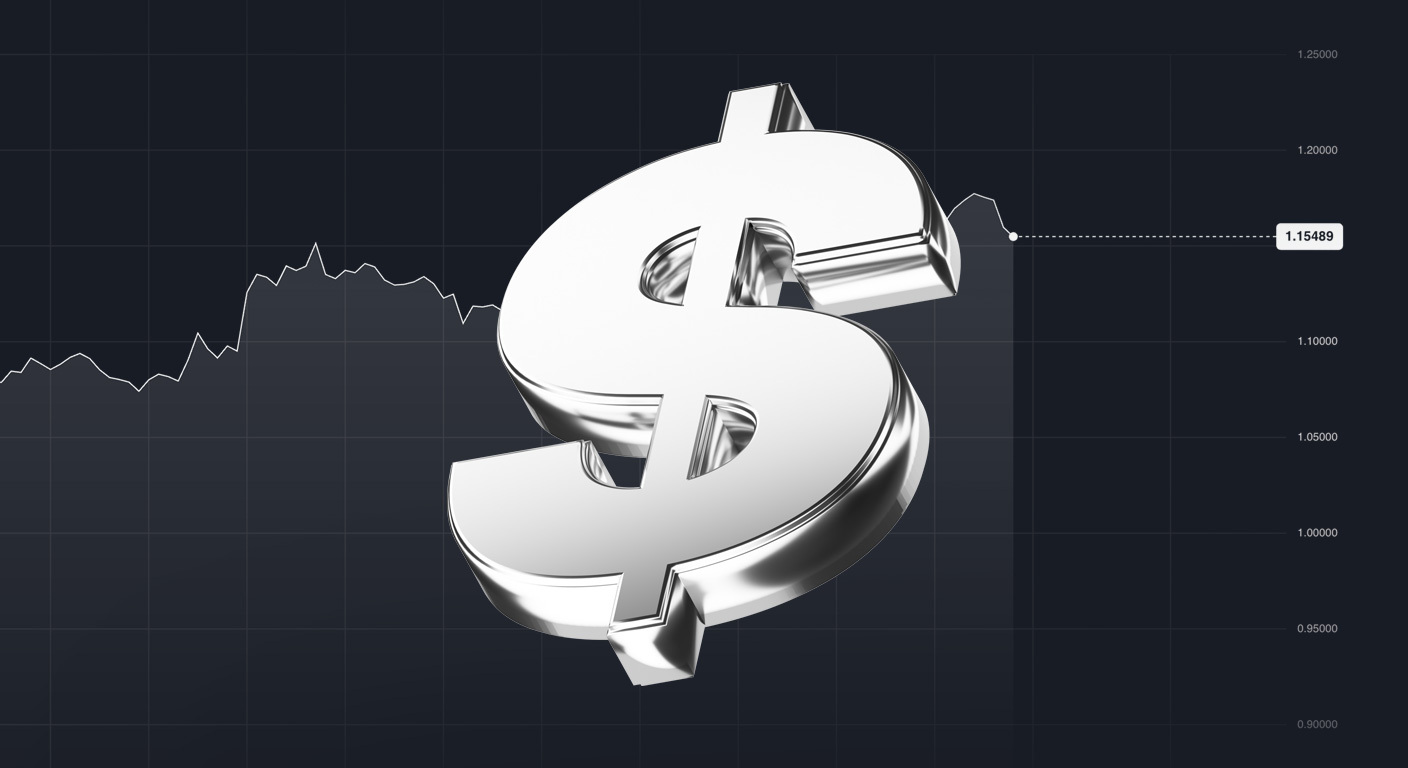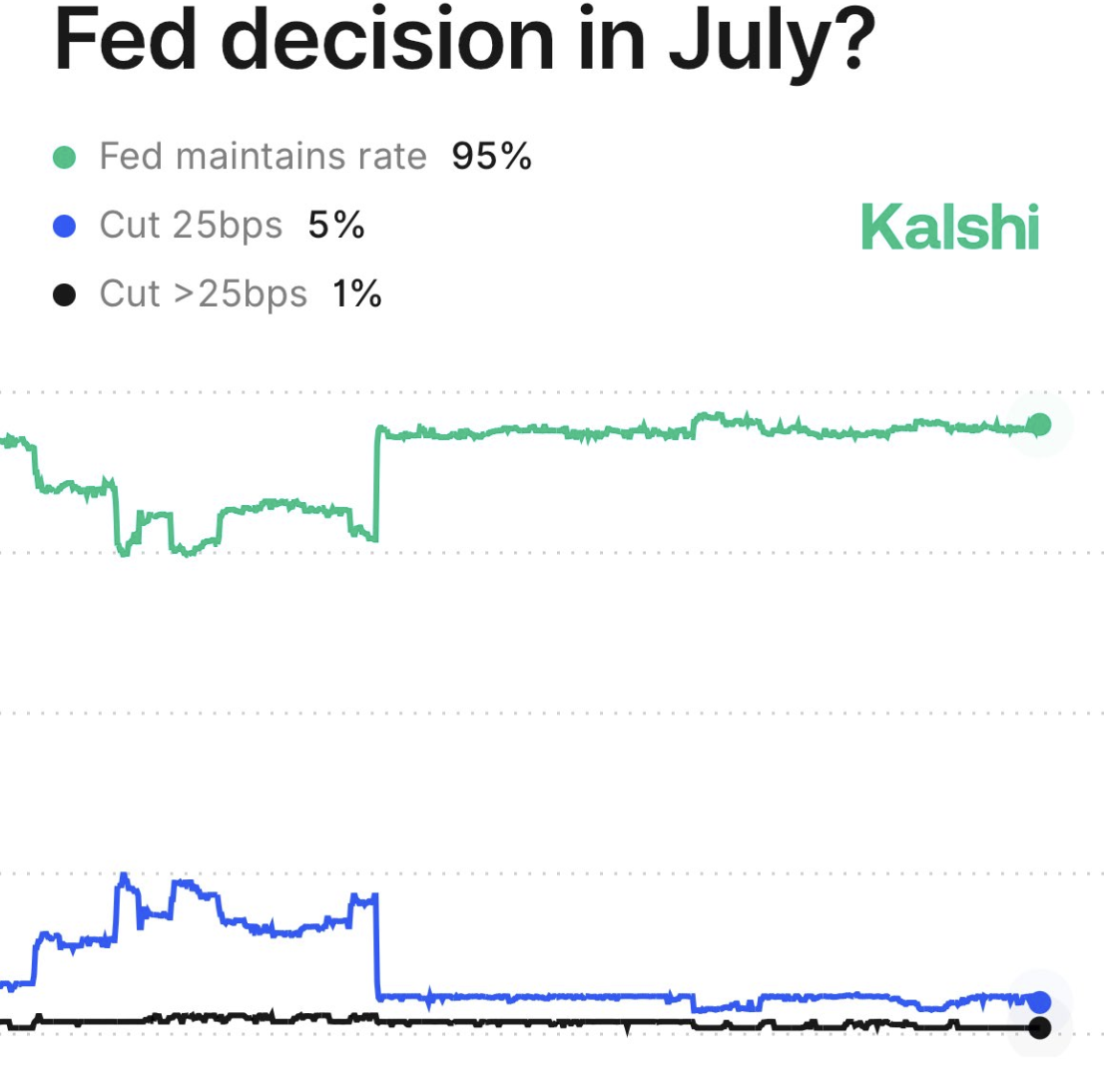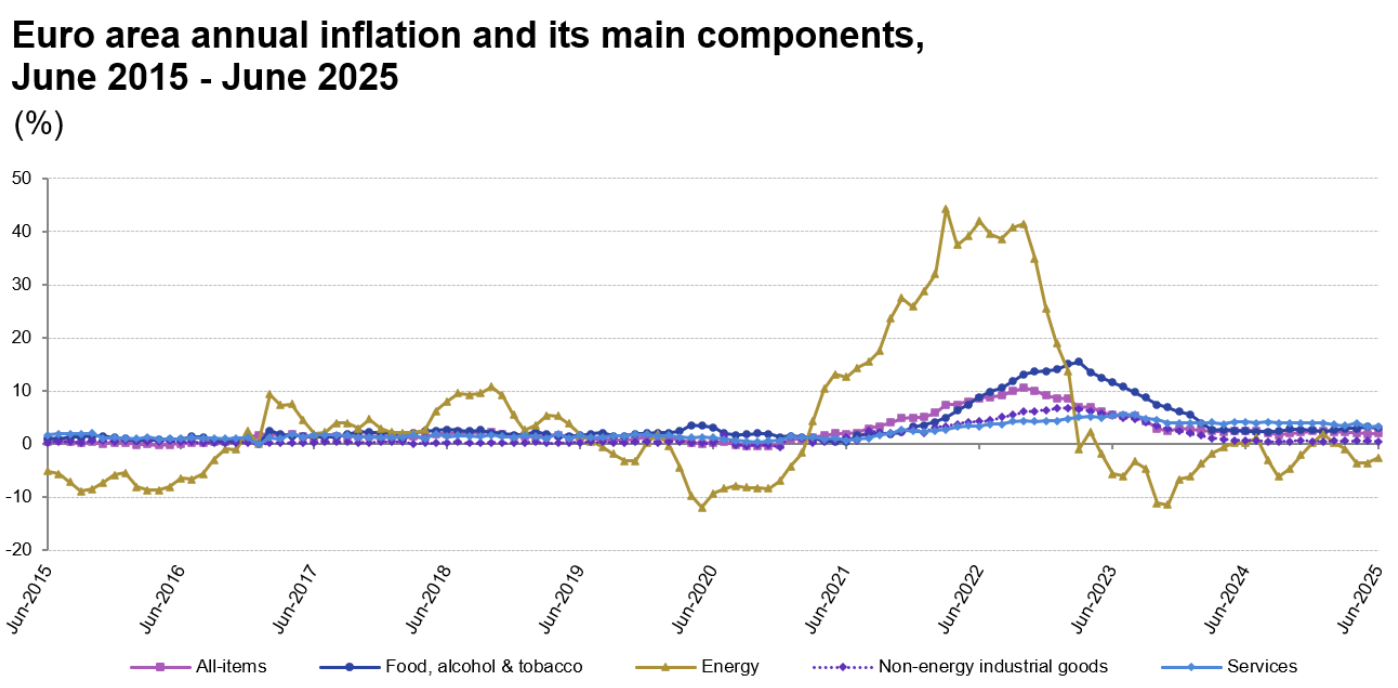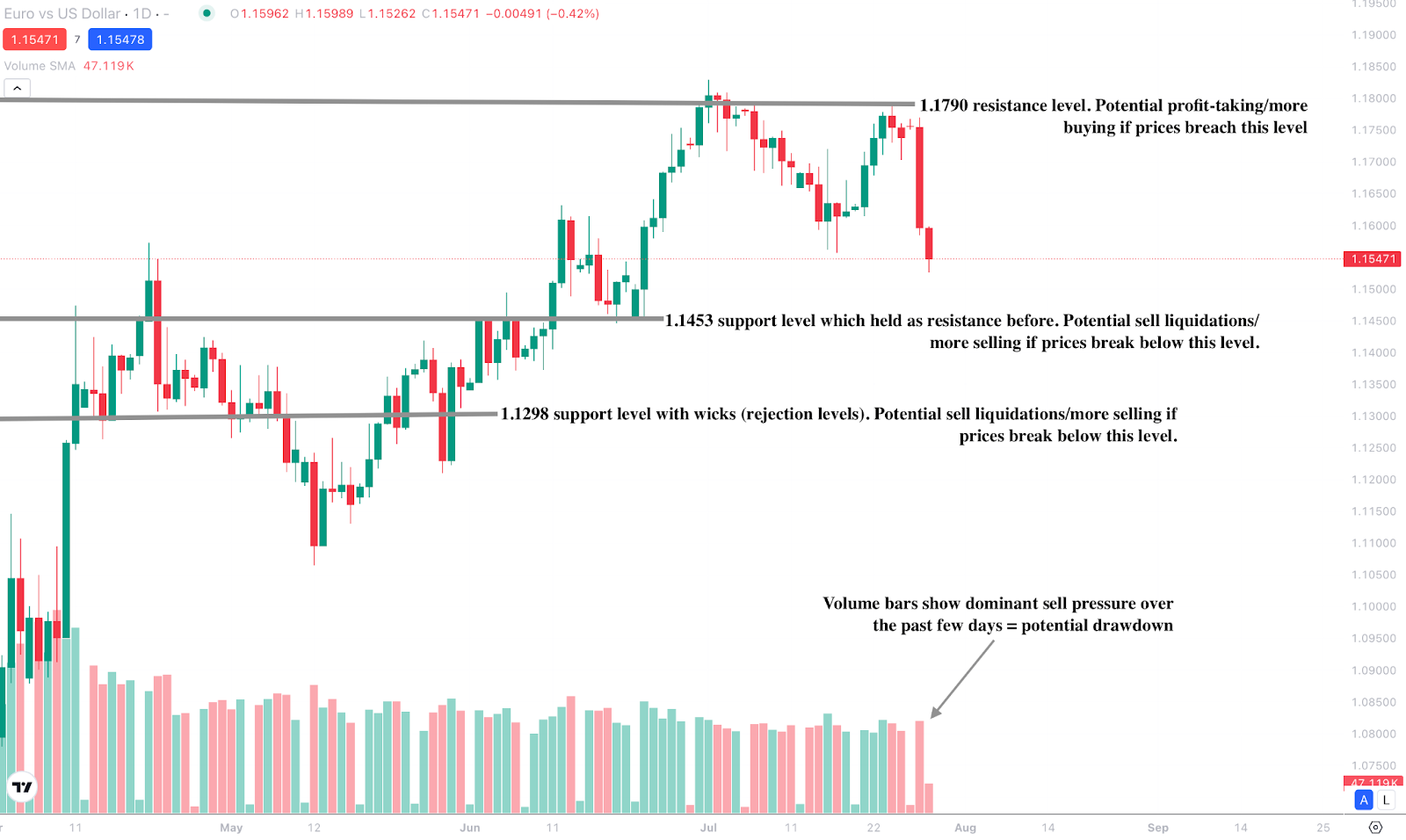The EURUSD pair faces potential downside ahead of Fed remarks

The euro-dollar pair is tiptoeing into Fed week on shaky ground. A surprise US–EU trade deal gave the euro a brief lift - and then the dollar came roaring back. Now, with markets fully expecting the Fed to hold rates steady, the real drama lies in what Powell says next. Throw in inflation figures and US jobs data, and you’ve got a recipe for fireworks.
Is this just the start of a bigger slide for EURUSD, or will the pair find its footing?
A trade deal that favours the dollar
The US and EU finally signed off on a trade agreement - just days before the 1 August deadline. European Commission President Ursula von der Leyen and President Trump shook hands on a deal that reportedly slashes US tariffs on EU goods to 15%, down from the originally threatened 30%. In return, the EU committed to €600 billion in US investment and ramped-up purchases of American gas and military hardware.
Markets cheered the announcement - briefly. EURUSD popped to 1.1770 early Monday, but it didn’t take long for traders to reassess. The euro sank more than 120 pips intraday, landing around 1.1590 by the US session open. It’s a classic case of “buy the rumour, sell the fact” - and it underscores just how fragile euro momentum really is.
According to analysts, this deal may have eased trade tensions, but the capital and energy flows it triggers seem to favour the US economy more than Europe’s - and that’s keeping a tailwind behind the greenback.
A fed on hold - but far from silent
Now for the main event: the Federal Reserve’s decision on Wednesday. The market is almost certain the Fed will keep interest rates unchanged at 5.25%–5.50% - the odds are at 95%, according to Kalshi.

But just because rates aren’t moving doesn’t mean the dollar won’t.
Jerome Powell’s press conference is where the real price action begins. The Fed Chair is under pressure from both sides - inflation’s still running hot at 3.3%, and President Trump isn’t shy about calling for rate cuts. That puts Powell in a tight spot.
A neutral tone could keep EURUSD range-bound. A hawkish stance - perhaps a reminder that inflation is still too sticky for comfort - could see the pair retest 1.14 or even break lower. On the flip side, if Powell surprises with dovish hints about a September cut, the euro might catch a second wind and push back toward the 1.17 zone, according to analysts.
ECB inflation policy: Eurozone inflation data adds to euro weakness
While traders digest the Fed’s tone, the Eurozone’s own data calendar isn’t offering much support for the single currency. Inflation figures out on Friday are expected to show a further slowdown to 1.9% - slipping below the ECB’s 2% target for the second time this year.

This could give the European Central Bank a bit of breathing room, but it also reignites concerns about weak demand and sluggish growth. With the ECB already split between hawks and doves, a soft print could increase calls for further easing- especially with GDP growth across Spain, Germany, and Italy stalling.
In other words, if the euro was looking for a data-driven rebound this week, it might be disappointed.
The jobs report that could change everything
Then comes Friday’s US Nonfarm Payrolls (NFP) report - the wildcard that could flip the script entirely. Markets expect a cooling in job creation, with July NFP forecast at 108,000, down from June’s 147,000. That would strengthen the case for a September rate cut - something the Fed has so far resisted confirming.

But if the NFP surprises to the upside, or if wage growth stays hot, traders could quickly revive the hawkish Fed narrative. In that case, the USD would likely surge again, dragging EURUSD further into bearish territory.
Also on the radar are the Fed’s preferred inflation measure - the Core PCE Price Index - and the ISM Manufacturing PMI. These could help cement market expectations heading into the final stretch of summer.
Where next for EURUSD? What traders should watch
EURUSD remains under pressure. The pair had been climbing inside a rising wedge pattern - typically a bearish reversal setup - and with resistance near 1.1790 now firmly rejected, the bias looks tilted to the downside.
If Powell surprises markets with dovish commentary and Friday’s US data disappoints, analysts say EURUSD could reclaim lost ground and push back up. However, any rally will likely face stiff resistance from here.
At the time of writing, the pair is plunging towards 1.15000 with sellers dominant on the daily chart. The bearish narrative is also supported by the volume bars showing sell pressure over the past few days. Should the bears keep advancing, we could see prices plunge further to find support levels around the 1.1453 and 1.1298 price levels.
Conversely, if we see a price reversal, prices could surge to find support at the 1.1790 resistance level.

Trade EURUSD price action with a Deriv MT5 account today.
ROW:
The performance figures quoted are not a guarantee of future performance.



